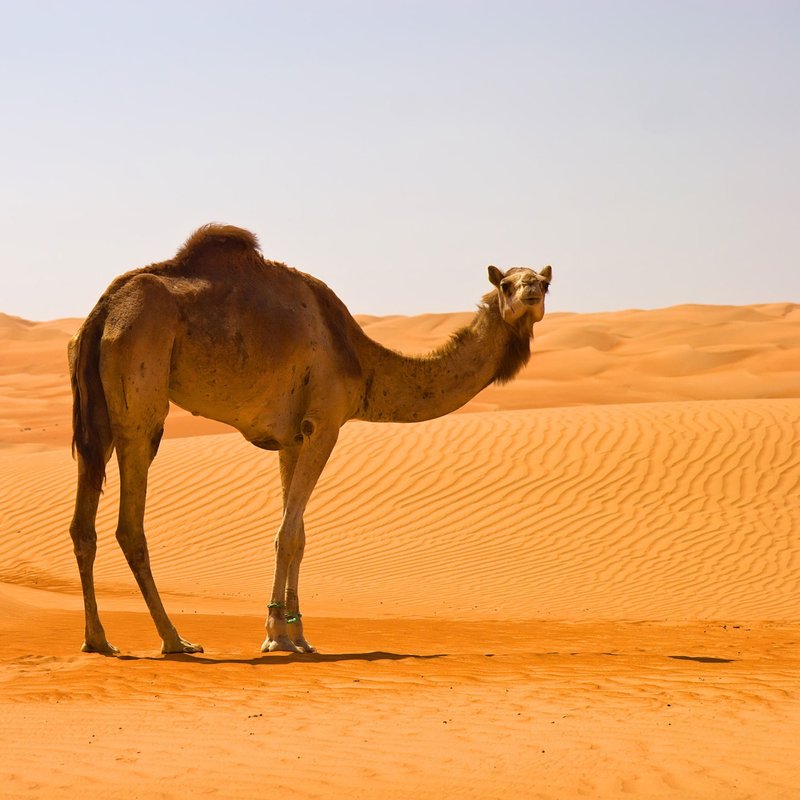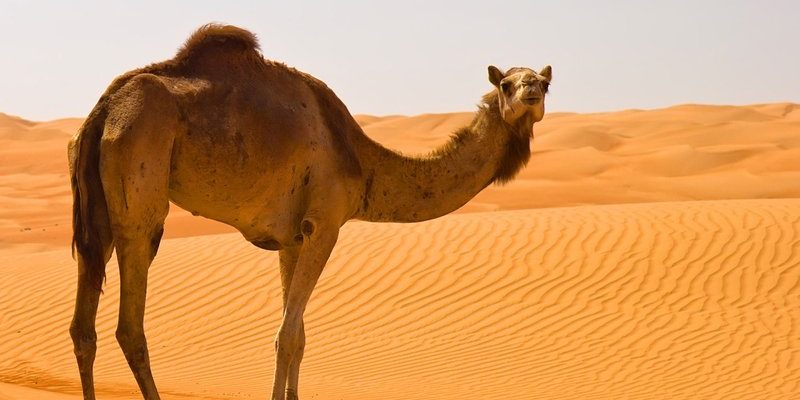
Think of camels like nature’s perfectly designed survival machines. From their unique physical features to their behavior and diet, each aspect plays a critical role in how they navigate life in the desert. Understanding how camels survive in harsh environments is more than just a story about animals; it’s a lesson in resilience and adaptation.
Physical Adaptations of Camels
One of the most striking things about camels is their physical appearance, which is perfectly suited for desert life. The first thing you might notice is that they have a hump—or, more accurately, humps. Contrary to popular belief, these are not water storage units, but rather reservoirs of fat. This fat can be broken down into energy when food is scarce, allowing camels to go for days without eating.
Additionally, camels have thick, leathery skin that helps protect them from the harsh sun. Their skin is also equipped with a layer of fat just beneath the surface that keeps them insulated against extreme temperatures. You might be surprised to know that camels can withstand temperatures as high as 120°F (49°C) and can drop to about 34°F (1°C) at night. Their body temperature can fluctuate to minimize sweating and conserve water—an extraordinary adaptation for surviving in such a dry climate.
Unique Feet and Eye Protection
Camels also have unique feet that are designed for walking in sandy environments. Their broad, flat feet prevent them from sinking into the sand, similar to how snowshoes help you walk on snow without sinking in. This adaptation allows them to travel long distances across dunes with ease.
And let’s not forget about their eyes! Camels have three eyelids and two rows of eyelashes that help keep the fine desert sand out. The third eyelid, a thin membrane, moves horizontally to protect their eyes while still allowing them to see. It’s like having built-in safety goggles!
Water Conservation Techniques
You might be wondering how camels manage to thrive without a constant supply of water. Here’s the thing: they are expert water conservers. Camels can drink up to 40 gallons of water in one go when they find it, but they don’t need to drink regularly. In fact, they can survive up to two weeks without water. Instead of relying on liquid, camels can extract moisture from the food they eat, such as dry grasses and grains.
Their kidneys and intestines are highly efficient at retaining water. When camels sweat, they don’t lose much; their sweat contains electrolytes that are carefully regulated. This means they can go through extreme dehydration without succumbing to it. This remarkable ability helps them endure the long, dry stretches of their desert habitat.
Temperature Regulation Strategies
Temperature regulation is another key factor in a camel’s survival. During the hottest part of the day, camels can allow their body temperature to rise to avoid sweating. This is similar to how a car engine heats up before it cools down. By the time the sun sets and temperatures drop, their body temperature decreases, allowing them to stay comfortable during the cool nights without losing precious water through sweat.
Camels also tend to be active during the cooler parts of the day and will rest during the hottest hours. This behavior not only conserves energy but also helps them avoid the extreme heat.
Behavioral Adaptations
Camels are known for their social behavior, which also contributes to their survival in harsh environments. Living in herds offers protection from predators and helps find resources like water. When one camel locates water, others in the group can benefit from that find, making it a team effort in the vast desert.
Their social structure is also fascinating. Camels form strong bonds with their owners and fellow herd members. This connection strengthens their survival instinct. A camel that’s comfortable with its owner is often more willing to endure long treks, which is crucial for survival in arid regions.
Diet and Feeding Habits
Speaking of resources, let’s talk about what camels eat. These animals are herbivores and can consume a range of plants, from dry grasses to thorny shrubs. Their tough mouths are designed to handle prickly vegetation that other grazers might avoid. Camels can also go without food for days, relying on their fat reserves to keep them going during dry spells.
What’s interesting is that camels have a unique digestive system that allows them to extract the most nutrients from their food. They have a three-chambered stomach that breaks down tough plant materials, ensuring they get the energy they need without requiring too much water.
Role in Human Society
Camels aren’t just impressive survivors in the wild; they also have a significant role in human societies, particularly in desert environments. For centuries, they’ve been used as pack animals, transporting goods across arid landscapes. Their ability to go without water and travel long distances made them invaluable for trade routes.
Moreover, camel milk and meat are staples for many desert-dwelling communities. Camel milk is rich in nutrients and can be consumed fresh or fermented, while camel meat provides essential proteins and fats. Not to mention, due to their strong temperament and adaptability, camels are often seen as a symbol of endurance and resilience for those living in harsh climates.
Camels are truly remarkable creatures, embodying the essence of survival in some of the most challenging environments on Earth. Their physical adaptations, water conservation techniques, and unique social behavior all contribute to their success in the desert. Whether it’s their ability to withstand extreme temperatures or their resourcefulness in finding food and water, camels are a testament to nature’s ingenuity.
So next time you think of the desert, picture a camel calmly striding across the sand, effortlessly adapting to its surroundings. It’s a reminder of how life can flourish even in the harshest of conditions, teaching us valuable lessons about resilience, adaptation, and the importance of community.
Camels are not just surviving; they’re thriving, and their story is one of nature’s most fascinating tales.

